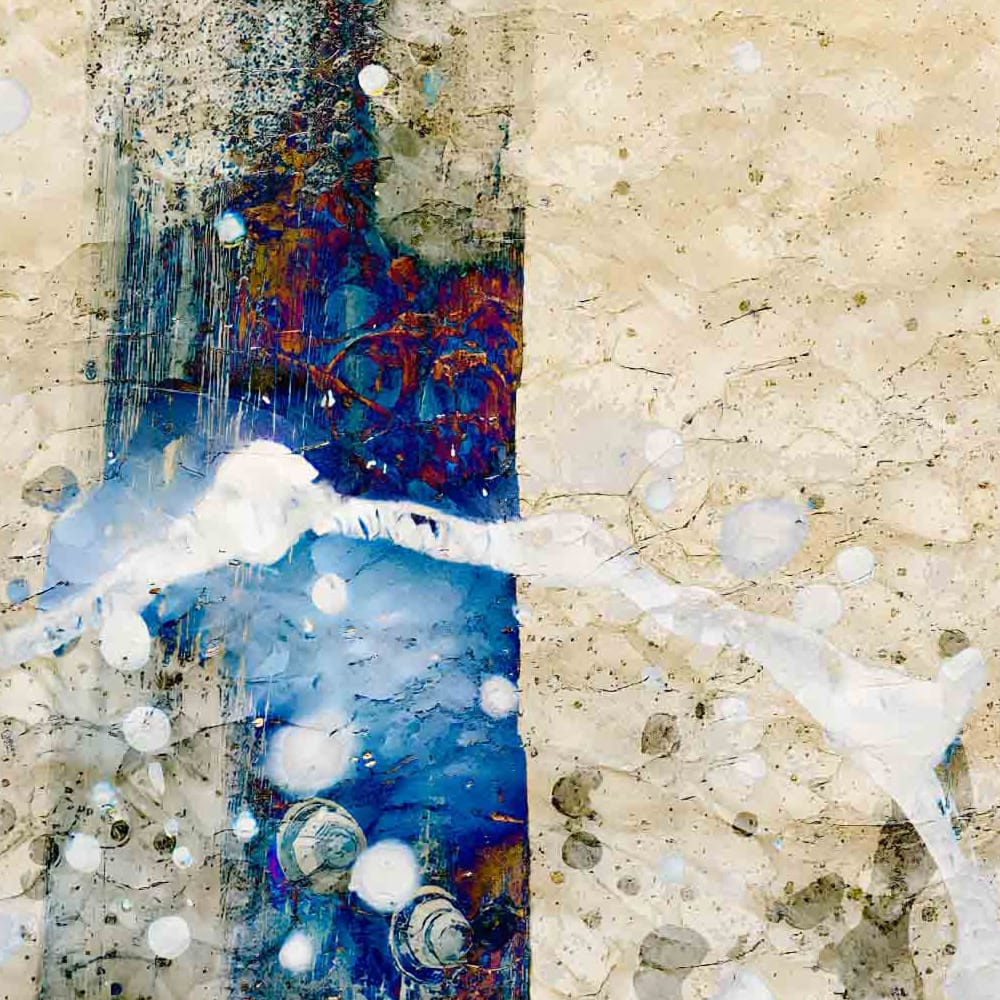A Mooring in Shifting Light
The Mariner’s Dream #3 brings the voyage into sharper symbolic focus. A ship’s anchor, partly submerged, holds centre stage — a gesture of weight and pause set against a field of shifting sea and light. Around it, vertical forms rise like towers or smokestacks, while pale circular motifs drift and settle like echoes of navigation. The piece becomes a meditation on mooring and motion: the desire to hold, and the inevitability of drift, rendered as a dream of perception rather than a literal scene.



The Weight of Intention in an Unstable Sea
The anchor’s presence transforms the composition into an allegory of attachment. It suggests safety, commitment, or refusal to be carried away — yet in the dreamlike sea that surrounds it, the anchor reads as provisional, subject to the same currents of memory and erosion that animate the series. This tension — between the weight of intention and the instability of perception — is the work’s central engine.
The vertical structures carry an industrial/architectural charge, oscillating between guardians and ruins. They introduce a sense of history and labour into the maritime field, hinting that what steadies us is never purely natural; it is built, maintained, and just as easily abandoned. Their faint glow underscores the liminal atmosphere: neither beacon nor warning, but a hovering presence within which the anchor takes on multiple meanings.
The circular marks evoke navigation and orientation — charts, celestial references, instruments — yet they float untethered. They feel like memory’s tools recast as symbols, inviting the viewer to consider how we locate ourselves when the world and our minds are in flux. As the third work, The Mariner’s Dream #3 expands the voyage from atmosphere into emblem, asking whether “holding fast” is possible in a sea of shifting vision, or whether mooring itself becomes part of the dream.
In the Collector’s Space
Collector’s Notes
- Edition: Available in four sizes, each signed and numbered.
- Atmosphere: Works equally well in contemplative domestic settings or more formal spaces, where its scale and detail can be fully appreciated.
- Viewing: At distance, the piece reads as a sweeping maritime vision; up close, the intricacy of texture reveals itself as almost painterly.
- Position in Series: As the first work, it sets the tone — a gateway into the voyage of The Mariner’s Dreams.




